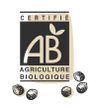How to analyze your garden soil easily and for free
The Jar TestAnalyzing your soil is essential for any gardener concerned with maintaining healthy plants and optimizing their yield. A simple and effective method for assessing the quality of your soil is to use the jar technique. By studying different soil samples taken from your garden, you can gain a wealth of valuable information about its composition and structure. The jar technique involves taking a soil sample from your garden and observing it closely. By analyzing the soil texture, color, drainage, and compactness, you can determine if your soil is healthy and balanced, or if it requires specific amendments. This will help you choose the plants best suited to your soil and apply the necessary fertilizers to improve its quality. This article will explain how to take a soil sample, how to analyze it using the jar technique, and how to interpret the results. You will also discover the various corrections you can make to improve the quality of your soil. Follow our tips and you can transform your garden into a true plant paradise! The jar test, also known as the "soil texture test" or "soil sedimentation test," is a simple and inexpensive method for assessing the soil texture in your garden or yard. It helps determine the relative proportion of sand, silt, and clay in the soil, which is important for understanding the quality of your soil and its potential for plant growth. Here's how to conduct a jar test to analyze your soil texture inexpensively: Materials needed: A soil sample from your garden or yard. A clear glass jar with a tight-fitting lid. Clean water. A stopwatch or watch. Steps to follow: Collecting the soil sample: Choose a representative spot in your garden or yard that you want to analyze. Dig a hole about 15 to 20 cm deep. Collect a small amount of soil (about a cup) from this depth. Make sure the soil is free of debris such as pebbles, roots, and organic matter.Preparing the Mix:Place this soil sample in the glass jar.Fill the jar with clean water to about 2/3 of its capacity.Close the jar lid tightly.Agitating the Mix:Shake the jar vigorously for about 5 minutes to thoroughly mix the soil and water.Sedimentation:Place the jar on a flat surface and let it sit for at least 24 hours. Soil will settle in layers based on its particle size. After settling, the soil is divided into three distinct layers: sand at the bottom, silt in the middle, and clay at the top. Measuring the proportion of each fraction: Use a ruler to measure the height of each layer (sand, silt, and clay). Calculate the relative proportion of each fraction as a percentage based on the height of each layer compared to the total height of the soil. Once you have determined the proportion of sand, silt, and clay in your soil, you can get an idea of its texture. For example, if sand makes up the majority, your soil is sandy. If clay predominates, the soil is clay. If silt is the main constituent, the soil is loamy. Soil texture affects water retention, drainage, fertility, and plant growth. This will help you choose the plants and crops that will thrive best in your soil or make amendments if necessary to improve the soil texture.The Soil Texture TriangleIt is recommended that you use the soil texture triangle as a basis for analyzing the results of the jar test. The texture triangle is a graphical tool that helps determine soil texture based on the relative proportions of sand, silt, and clay in the soil. Using this triangle, you can more accurately categorize your soil texture.The soil texture triangle is usually represented as a triangular diagram where each corner represents a type of soil particle (sand, silt, and clay). The point where the three sides of the triangle intersect determines the soil texture based on the relative percentages of these three components. Here's how you can interpret the jar test results using the texture triangle: Measure the proportions of sand, silt, and clay in your soil sample, as explained earlier. Plot these percentages on the texture triangle by placing a point inside the triangle based on the relative proportions. For example, if your soil is 60% sand, 30% silt, and 10% clay, place a point in the triangle accordingly. Based on where this point is located in the triangle, you can determine the soil texture. For example, if the point is near the corner of the triangle with a high proportion of sand, your soil is primarily sandy. If the dot is near the silt corner, your soil is mostly loamy, and so on. The texture triangle provides a more accurate classification of soil texture than simply assessing the relative proportions of the three components. This information is useful for understanding soil characteristics, including its water retention, drainage, and ability to support plant growth. Depending on the soil texture, you can adjust your gardening or farming practices for better results. Finally, if the jar test isn't enough, to assess the presence of organic matter in your soil, you can also conduct laboratory tests to measure the organic carbon content in your soil. A high organic carbon content generally indicates good organic matter content. Then, you can also observe the characteristics of your soil. Soil rich in organic matter will have a light, crumbly texture, with good water retention. Additionally, the presence of earthworms and other soil organisms is a positive sign, as they feed on organic matter and improve soil structure. Finally, you can also do a simple test called the spade test. If you stick a spade into the soil and see a dark, wet color when you pull it out, this indicates a good amount of organic matter.





